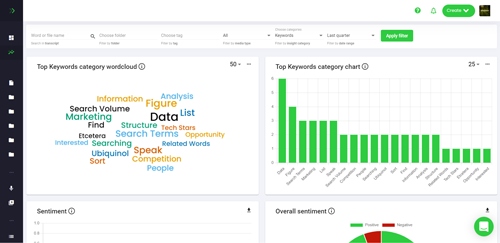How To Do Keyword Clustering
Keyword clustering is a powerful tool for marketers, qualitative researchers, customer experience managers, market researchers, product researchers, SEO specialists, business analysts, data scientists, academic researchers, and business owners. It is a process of grouping related keywords together to create a more organized and comprehensive keyword list. This list can then be used to optimize content for search engine optimization (SEO) and to better understand the topics and trends related to a particular keyword. In this article, we’ll discuss what keyword clustering is, why it’s important, and how to do it.
What Is Keyword Clustering?
Keyword clustering is the process of organizing related keywords into groups or clusters. This helps marketers and researchers better understand the topics and trends related to a particular keyword. For example, if you’re researching the keyword “marketing”, you could create a cluster of related keywords such as “digital marketing”, “content marketing”, “social media marketing”, and “SEO”. By doing this, you can quickly identify the topics and trends related to the keyword “marketing” and create content that is more focused and relevant to your target audience.
Why Is Keyword Clustering Important?
Keyword clustering is important for a variety of reasons. First, it helps marketers and researchers better understand the topics and trends related to a particular keyword. This can help them create content that is more focused and relevant to their target audience. Second, it helps marketers and researchers identify new opportunities for content creation. By grouping related keywords together, they can quickly identify new topics and trends that they may not have considered before. Finally, keyword clustering can help marketers and researchers optimize their content for SEO. By grouping related keywords together, they can create content that is more likely to rank well on search engines.
How To Do Keyword Clustering
Now that you understand why keyword clustering is important, let’s discuss how to do it. The first step is to identify the main keyword you want to focus on. This could be a broad keyword such as “marketing” or a more specific keyword such as “social media marketing”. Once you’ve identified the main keyword, you can start to identify related keywords. You can do this by using keyword research tools such as Google Keyword Planner or SEMrush. These tools will provide you with a list of related keywords that you can then group into clusters.
Once you’ve identified the related keywords, you can start to group them into clusters. You can do this by looking for common themes among the related keywords. For example, if you’re researching the keyword “marketing”, you could create a cluster of related keywords such as “digital marketing”, “content marketing”, “social media marketing”, and “SEO”. By doing this, you can quickly identify the topics and trends related to the keyword “marketing” and create content that is more focused and relevant to your target audience.
Conclusion
Keyword clustering is an important tool for marketers, qualitative researchers, customer experience managers, market researchers, product researchers, SEO specialists, business analysts, data scientists, academic researchers, and business owners. It is a process of grouping related keywords together to create a more organized and comprehensive keyword list. This list can then be used to optimize content for search engine optimization (SEO) and to better understand the topics and trends related to a particular keyword. By following the steps outlined in this article, you can easily create keyword clusters that will help you create content that is more focused and relevant to your target audience.



